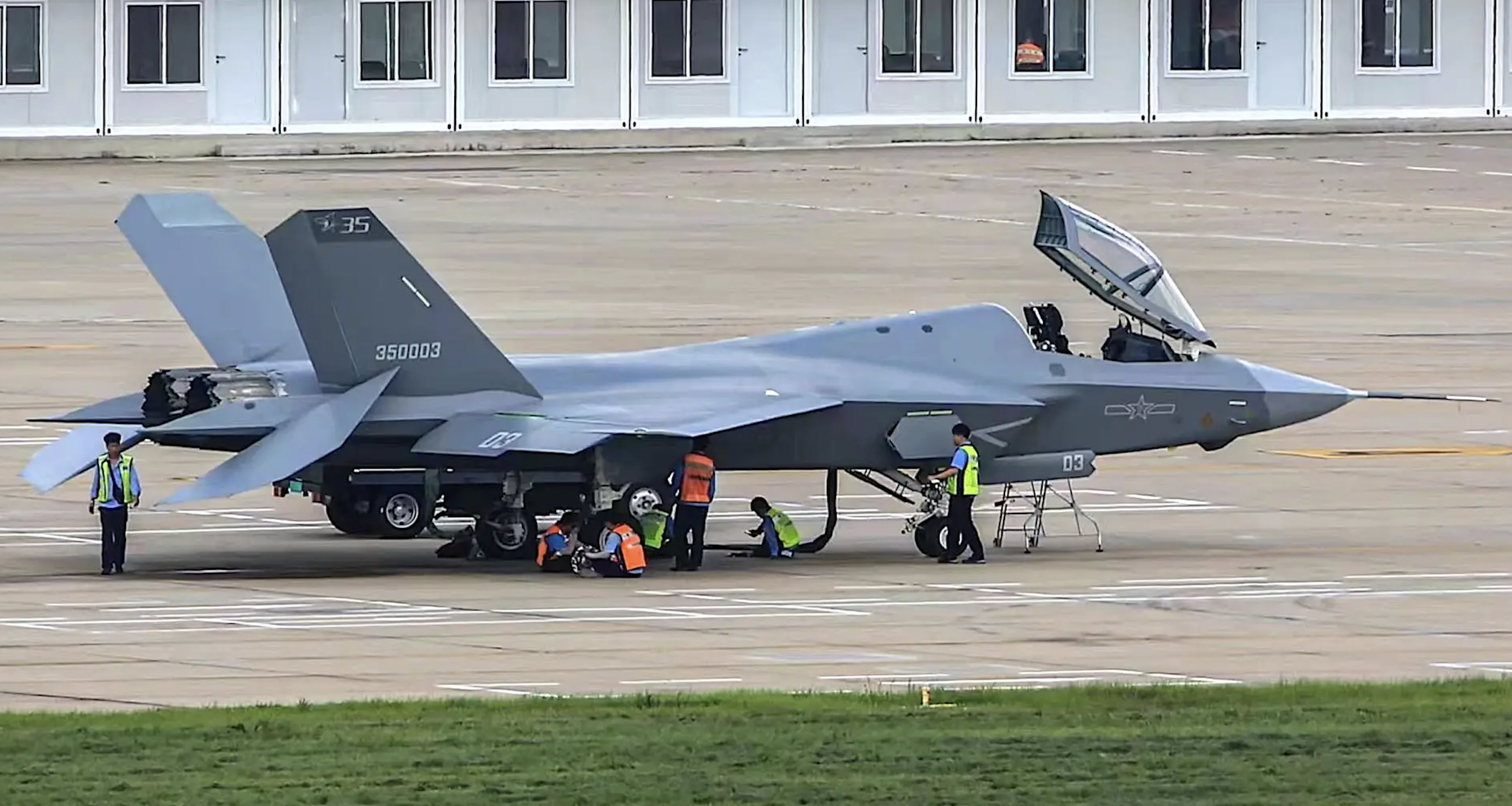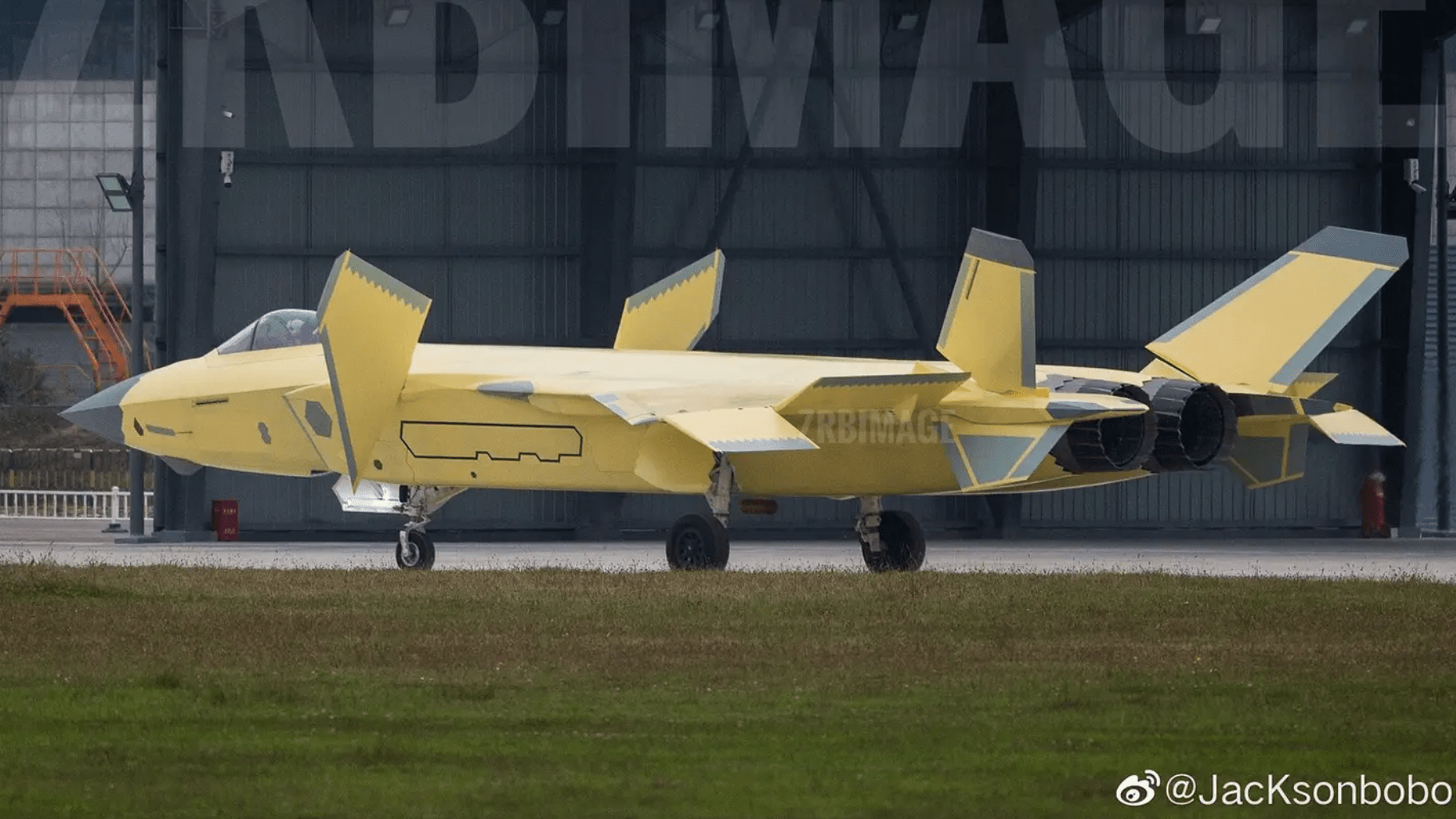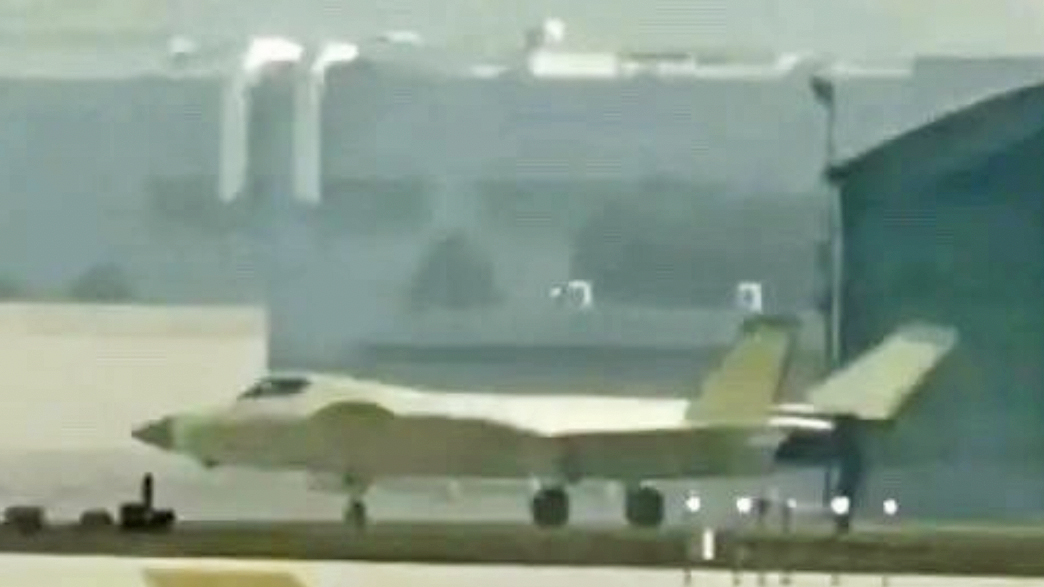Intriguing images out of China could reveal a new version of the Chengdu J-20 Mighty Dragon stealth fighter. While the quality of the photos is too poor to confirm much about the changes that have been made to the jet, we’ve long been awaiting a brand-new variant of the fighter. This is frequently referred to as the J-20B, but it’s worth noting that the same (unofficial) designation has also been applied to a different, two-seat version of the stealth jet, which you can read more about here.
The photos in question are blurry, suggesting they were taken with a long lens, not uncommon for this type of disclosure in China. The location is almost certainly Chengdu’s production plant airfield in the city of the same name, in Sichuan province. The aircraft — which may have the serial number 2051 on the nose — wears the yellow primer scheme often applied to Chinese military aircraft prior to their being painted. As far as is known, the new variant has not flown yet.
This J-20 is a single-seater, in common with previous production batches up to now. What’s intriguing about the J-20 that we can see here are the changes that have apparently been made to the shape of the airframe, which could suggest an effort to improve its aerodynamic/performance capabilities and/or low-observable qualities.
Most notable, at this long distance, are what looks to be a change that has been made to the cockpit canopy, which now appears to be much flatter, with a distinctive low-profile appearance compared to the previous transparency.
One likely reason behind such a change is an overall optimization of the aerodynamics of the jet, with the flattened cockpit canopy blending into a raised spine. In fact, it seems that the rear section of the jet behind the canopy has some broad similarities with the more ‘blended’ treatment on the spine of the J-35 carrier-based stealth jet. These modifications are something we have looked at in the past in depth, including the resulting reduction in the rearward vision for the pilot.

Aerodynamically, this kind of arrangement likely has the effect of improving performance and handling during transonic flight, by reducing the drag on the airframe. The transonic flight regime typically refers to speeds between Mach 0.8 and 1.2, at which a fighter like the J-20 will spend much of its time, in many air combat profiles. This kind of treatment is something that has been included in previous Chinese engineering white papers and has also been widely discussed by Chinese observers in the context of the J-35. It, therefore, makes a good deal of sense for an improved version of the J-20 to include developments of this kind. And, since the spine is now enlarged, that could provide useful space for additional avionics, or perhaps even fuel.
What’s much less clear is whether the apparent new version of the J-20 replaces the current-standard WS-10 engines with the long-awaited WS-15s. These were always considered to be the definitive powerplant for the type. So far, however, this powerful Chinese engine has lagged behind the development curve of the aircraft itself.
Andreas Rupprecht told The War Zone that, while there have been plenty of rumors suggesting that a WS-15-powered variant of the J-20 will appear ‘soon,’ according to eyewitness accounts, the new variant apparently seems to retain the previous WS-10 engines. At best, perhaps only one WS-15 is installed, for test purposes. Either way, it would not be entirely surprising for a new version of the J-20 to be fitted with the tried and tested WS-10 at least for the first part of its flight-test program. Once the aerodynamic changes have been proven out, then the definitive WS-15s could be installed.
At this point, it’s also worth remembering that we can’t vouch entirely for the veracity of these photos. In the past, many such images have been incorrectly called out for being fakes, only to be verified by a steady stream of more reliable photos and videos. While this applies to new aircraft developments out of China in general, the J-20 has very much followed this path, with its first appearance and subsequent developments introduced by a pattern of ‘leaks’ on the internet in China. At the same time, the existence of engineering white papers suggesting that these changes to the J-20 are at least an area of study would appear to be significant, too.
It may also be no coincidence that a new J-20 model appears now: it was on December 22, 2010, that the first J-20 prototype broke cover when undergoing high-speed taxiing tests at Chengdu, ahead of its maiden flight in January (seen in the video below). The significance of such calendar milestones is a fact not lost on the Chinese aviation industry and the military at large.

With that in mind, there’s a decent chance that these photos do indeed show a new J-20 variant, although that’s not to say it’s the so-called J-20B, and we can’t even be sure that this designation presently exists.
However, it was surely only a matter of time before a refined version of the J-20 did appear.
Such an aircraft may even feature thrust-vectoring controls (TVC), providing an additional boost in terms of maneuverability and optimized performance. TVC engines could also enhance stealth qualities, by reducing canard deflections during flight. Different TVC engine designs, whether a coincidence or not, were also a major feature of the industry display stands at the Zhuhai Airshow this year.
While a thrust-vectoring version of the WS-10 engine has previously been tested on a J-10B single-engine fighter, we don’t know for certain that the same technology will find its way onto the J-20. It could also be the case that the additional thrust offered by the new WS-15 is judged a sufficient advance.
A variant of the WS-10 engine with thrust vectoring is demonstrated in-flight fitted to a J-10B single-engine fighter:

As we have discussed in the past, more powerful engines combined with thrust vectoring should make the J-20 better able to fly and maneuver at much higher altitudes. That, in turn, would endow its sensors and already long-legged air-to-air missiles with even greater reach. Other improvements of a powerplant change would likely include enhanced fuel efficiency and improved range.
Overall, the story of the J-20 is closely linked to China’s wider travails in terms of fighter engine development. Early prototypes and low-rate initial production (LRIP) versions of the J-20 used Russian AL-31 engines, as China still struggled to perfect quality, indigenous jet engines for its fighters.
Once the locally developed — and more powerful — WS-10 engine had been fully proven, this powerplant then began to appear on the series-production J-20A variant, which entered service in September 2017. Increasing confidence in the WS-10 has since seen it introduced on all current production versions of the Chinese Flanker series, as well as on the J-10.

Regardless of the TVC question, the introduction of the WS-15 would be the next logical step, potentially giving the J-20 the ability to sustain supersonic speed without afterburner, also known as supercruise.
For the time being, the exact powerplant for the new J-20 version remains unclear, but it seems almost certain the aircraft features some significant changes to its aerodynamic configuration, at the very least. Bearing in mind that Chinese military technology is moving fast, the next version of the J-20 will also likely include avionics enhancements and sensor improvements.
Overall, the latest developments from Chengdu seem to reinforce the increasingly central position of the J-20 within the People’s Liberation Army (PLA), for which it remains, for now, its only operational stealth fighter. The exact number of these jets that have been produced to date is unclear, but estimates generally range from 70 to 150 examples, including test jets. The appearance of the two-seat version last year and continued deliveries of standard J-20As to new operational units indicate a program that’s running at an impressive pace.
We will certainly keep a close eye on the continued developments of China’s Mighty Dragon, with the strong possibility of more revelations to come in the near future.
Contact the author: thomas@thedrive.com
